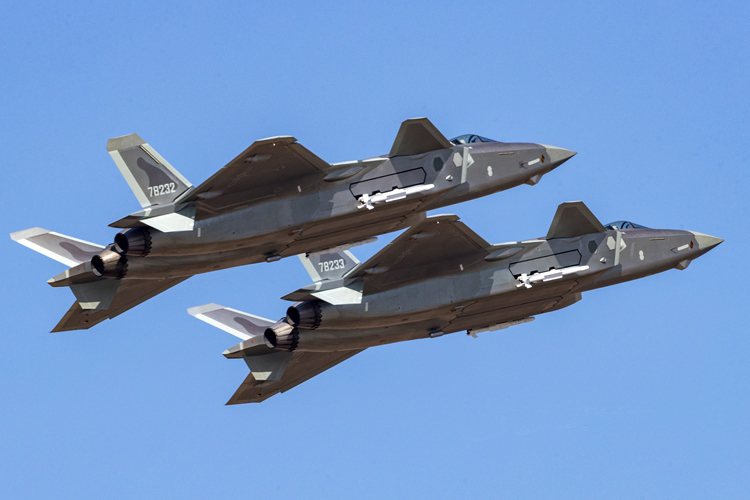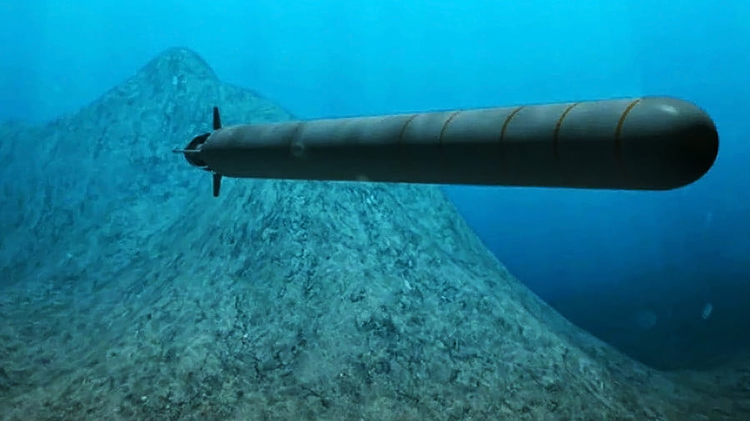INDIAN ARMED FORCES CHIEFS ON OUR RELENTLESS AND FOCUSED PUBLISHING EFFORTS

The insightful articles, inspiring narrations and analytical perspectives presented by the Editorial Team, establish an alluring connect with the reader. My compliments and best wishes to SP Guide Publications.

"Over the past 60 years, the growth of SP Guide Publications has mirrored the rising stature of Indian Navy. Its well-researched and informative magazines on Defence and Aerospace sector have served to shape an educated opinion of our military personnel, policy makers and the public alike. I wish SP's Publication team continued success, fair winds and following seas in all future endeavour!"

Since, its inception in 1964, SP Guide Publications has consistently demonstrated commitment to high-quality journalism in the aerospace and defence sectors, earning a well-deserved reputation as Asia's largest media house in this domain. I wish SP Guide Publications continued success in its pursuit of excellence.
Chinese Stealth and UW Technology
China's long-range heat-seeking radar boosts anti-stealth technology. It has also completed the conceptual design work for a small, low-cost nuclear reactor for use in swarming torpedoes that could cross the Pacific within a week.
 |
The Author is Former Director General of Information Systems and A Special Forces Veteran, Indian Army |

During NATO’s aerial bombing of Yugoslavia in 1999, an American B-52 stealth bomber accidentally bombed the Chinese Embassy in Belgrade. Presently, the US has placed its B-52 stealth bombers in Australia following the visit of Nancy Pelosi, Speaker of the US House of Representatives to Taiwan, Chinese reaction and escalation of tensions in the region. But this is mere posturing by America as it can hardly afford to get in direct conflict with China. However, tensions in the region are benefiting the US arms manufactures with Japan having doubled its defence budget and Taiwan’s defence budget hiked by over 14 per cent. Other South Asian countries are also seeking more weapons albeit Poland has signed a deal to procure tanks and weaponry worth $6.5 billion from South Korea.
Since the accidental bombing of the Chinese Embassy in Belgrade in 1999, China has been focused on counter-stealth technologies. Now Chinese engineers have built a small Infrared Search-and-Track (IRST) system that can detect the heat signature of a high-speed mobile aircraft at an unusually long range. A team of engineers from the Sichuan Jiuzhou Electric Group Company published a paper in the Chinese journal ‘Infrared and Laser Engineering’ on August 19, 2022, claiming that their IRST system could spot and track a civilian aircraft from a distance of 285 km.
According to Chinese researchers, the outline of the target, the rotor, the tail, and the number of engines can be identified from the infrared spectrum image. Due to its small size, the IRST system can be mounted on a car, aircraft, or even a satellite for multiple purposes including surveillance, early warning and missile guidance. It can also emit laser beams to illuminate the target aircraft to collect more information like the number of windows on the plane.
Infrared Search-and-Track (IRST) technology is indispensable for counter-stealth. It is fully passive which implies it does not give away the location of the aircraft it is mounted on.
IRST technology is indispensable for counter-stealth. It is fully passive which implies it does not give away the location of the aircraft it is mounted on, unlike search radars which emit radio waves if the pilot uses the radar in active mode to detect the enemy aircraft. The IR signature of an aircraft comprises the heat generated from engines and the frictional heating with air with the nose and leading edges becoming hot as the aircraft cuts through the air at high speeds. The radar-evading design features on stealth aircraft do not affect the IRST, as it depends on its infrared (IR) signature alone.
According to a report published in foreign media in 2015, China had developed IRST radar for its J-20 stealth fighter aircraft that could pick up the signature of a US B-2 stealth bomber 150 km away and of the F-22 fighter 110 km away. The new miniature IRST system developed by Chinese researchers could give a longer detection range. The US stealth aircraft like the F-35, F-22, and F-117 Nighthawk have reflective metallic coating. However, this may not be enough to hide from increasingly advanced IRST systems.
Vulnerabilities of the US B2 stealth bomber to IRST systems became apparent in 1990’s with certain hot spots in the stealth bomber including sections of the non-metallic skin and the intakes, tailpipes, and exhaust plumes of four turbo-fan jet engines; because of which the Soviet Union developed advanced heat-seeking detection systems.
China launched massive military exercises, including deploying its J-20 stealth fighter aircraft, around Taiwan in response to Nancy Pelosi’s visit to that country. But elsewhere, China’s second stealth fighter Shenyang J-35 (also known as the FC-31) has been sighted. The aircraft’s canopy of the J-35 is front-opening, internally bowed with an integral bulkhead at the back, just like the A and C variants of Lockheed Martin’s F-35 Joint Strike Fighter. The J-35 is reportedly the second flying prototype and third in all. The Shenyang J-35, fitted with WS-21 engines, has the emblem of a ‘flying shark’ akin to the PLAN J-15 carrier-based fighter jets, which confirms its naval role. China is likely to showcase the J-35 at the upcoming Zhuhai Air Show in November 2022.
China plans to have five-six carrier groups and the first Type 004 aircraft carrier is likely to be launched in the near future and is expected to have nuclear propulsion which could also power onboard weapons like lasers and railguns.
China launched its third aircraft carrier, ‘Fujian’ from Shanghai shipyard on June 17, 2022. Fully indigenous with catapult launch, it is technically more advanced than China’s two operational aircraft carriers - the ‘Liaoning’ commissioned in 2012 and the ‘Shandong’ which entered service in 2019. Fujian is a Type 003 aircraft carrier with a displacement of around 85,000 to 1,00,000 tonnes and slightly smaller in size than the US Navy's Ford Class ships. Fujian will be undergoing a series of tests and it is not known when it would enter service.
China’s Type 004 Aircraft Carrier, construction of which began at Jiangnan Shipyard in December 2017, is planned to be larger than the Type 003. The Type 004 is expected to have nuclear propulsion which could also power onboard weapons like lasers and railguns. Speculation is that Type 004 aircraft carriers will carry Shenyang J-35 stealth fighters. China plans to have five-six carrier groups and the first Type 004 aircraft carrier is likely to be launched in the near future.
In 2010, Russia announced its giant torpedo ‘Poseidon’, which with a nuclear warhead can hit coastal areas of the US. The Poseidon’s 2-megatonne nuclear warhead is 100 times more potent than America’s nuclear bomb dropped on Hiroshima. Now a report published in China’s ‘Journal of Unmanned Undersea Systems’ indicates that Chinese researchers propose to develop a miniature version of Russia’s Poseidon autonomous submarine of Russia, the first known underwater drone driven by nuclear energy. There is speculation that these Chinese torpedoes could be capable of crossing the Pacific to hit US coastline in “over a week” without getting detected in their course.

According to the Chinese researchers, the mini version of the Russian Poseidon would be different and much smaller; which could be placed into a typical torpedo tube and launched in huge numbers from virtually any submarine or battleship, with each torpedo maintaining cruising speed of over 56 km/h for “200 hours” using a disposable nuclear reactor before being dropped to the seafloor. Thereafter, it will use a battery to power a conventional weapon strike.
Chinese researchers propose to develop a miniature version of Russia’s Poseidon autonomous submarine. Chinese plan of using the mini Poseidon for conventional weapon strike must be taken serious note of, given its stealth, long endurance and their use in swarms.
Given the catastrophic escalation of crossing the nuclear threshold resulting in mutual destruction with no clear winner, Russia’s Poseidon and China’s nuclear tipped mini Poseidon would be important additions to respective nuclear deterrence. But the Chinese plan of using the mini Poseidon for conventional weapon strike must also be taken serious note of, given its stealth, long endurance and their use in swarms.
India needs to develop matching counter and offensive capabilities in an early timeframe.





